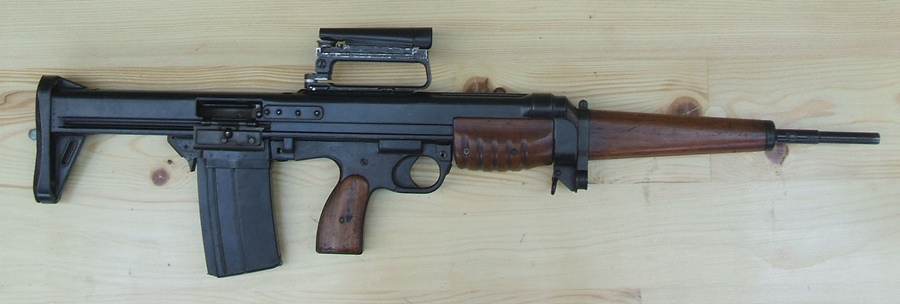
The EM1 was an experimental British rifle developed in the late 1940s, and was definitely the high-tech wonder rifle of its day. It was a bullpup-style design before that was a trend, and used a roller locking action take right from the fancy German arms captured during and after WWII. It was not adopted, losing out at the time to the visually similar and mechanically different EM2 rifle, which then fortunately lost out the the FAL. Field stripping the EM1 (and EM2 for that matter) is not a huge task, but disassembling the bolt is an absolute nightmare in anything resembling combat. Doing it on a clean workbench is tricky enough.
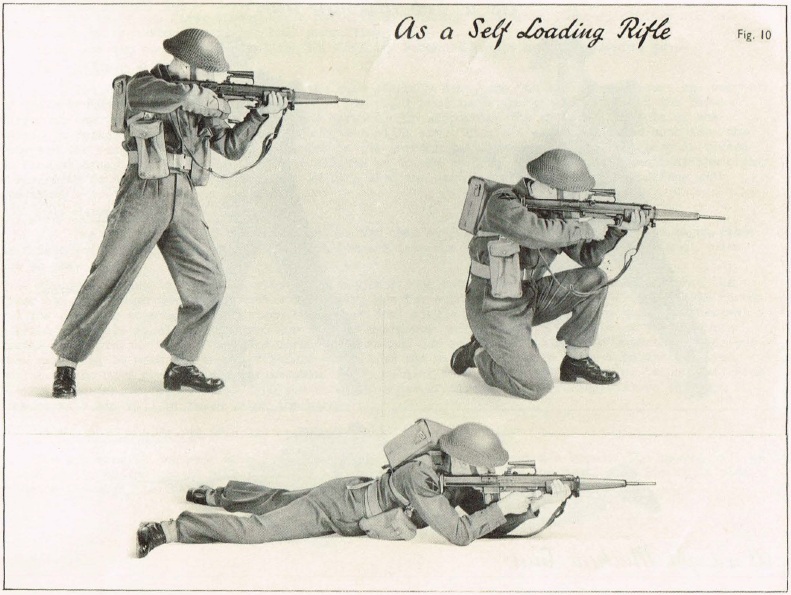
The EM1 was chambered for the .280/30 cartridge (also known as .280 Enfield), which was a capable intermediate cartridge, and made the rifle controllable both in semiauto and fullauto firing (especially when using the optional bipod). One interesting element noted in the EM1 manual was the inclusion of a built-in stripper clip guide in each magazine:
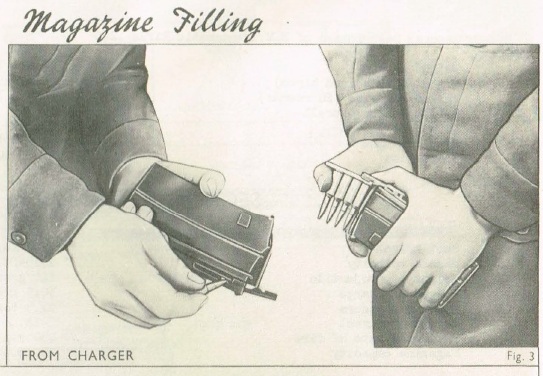
Interestingly, the EM1 we have examined in person had a magazine that did not have this integrated guide, although we have also seem other EM1 mags that did have them. The feature is a good microcosm of the whole rifle – well intentioned, but vastly more complex than necessary. Another example of this is the magazine holdopen device, which will automatically close the bolt and chamber a round when a loaded magazine is inserted. The idea sounds good on paper, but creates a different manual of arms compared to every other weapon an infantryman might encounter or be issued, and also creates a novel opportunity for mechanical failure in the gun.
We have an original manual for the EM1 available, as well as a set of photos of one. The manual does a pretty good job of describing how the gun functions (and has some very good illustrations).
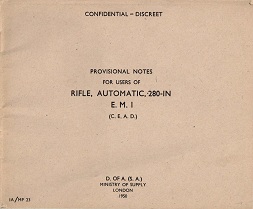
Photos (click here to download the gallery in high resolution):
[nggallery id=142]


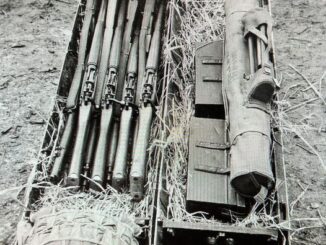
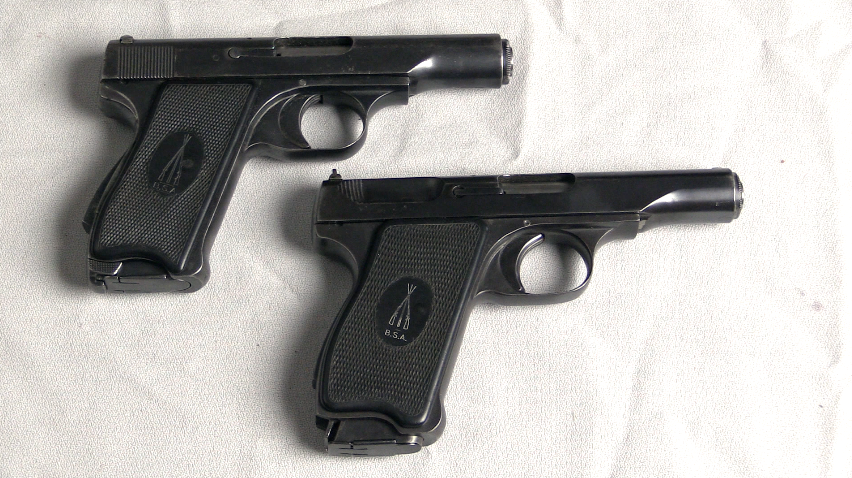
I’ve always been curious what the sight picture was like on those. Apparently the British just love having that upside-down German post reticule (And, so do apparently the Russians nowadays with their 1P29, even though it’s just a shameless SUIT sight copy with a Russian-style rangefinder and AK mount).
I’m guessing that the quality of the sight is just awful, considering what 1940’s scopes in general are that aren’t ZF 39s or Unertls. With a scope that size, I can only imagine it makes the PU look like it has a bright picture with a wide field of view.
It’s a 1x sight, so there’s no magnification going on, which helps the brightness and FoV. It didn’t seem like a particularly bad unit, but I didn’t have the opportunity to try it out in anything like field conditions.
Field stripping the EM1 (and EM2 for that matter) is not a huge task, but disassembling the bolt is an absolute nightmare in anything resembling combat.
Is that likely to come up much?
I mean, “ease of detail disassembly under fire” isn’t exactly the most important thing in a small arm, I’d hope, on the grounds that one should never, ever have to do it. Heck, the Nagant is Quite Awkward to reassemble correctly under stress, but as bolties go, is a wonderfully effective arm, after all.
(Now, requiring it for common maintenance would be an automatic fail-out.)
I love you.
Also, the reason why they’re fond of having a post projecting down from the top of the field of view is that if you have to raise the sights to compensate for range you’re not covering your target with the post.
I haven’t used the EM-1’s version or the true SUIT, but at least on the 1P29 I found it very difficult to adjust for range, seeing as there’s nothing you can reference inside the scope as to how far you’ve adjusted. For me at least it made shooting beyond battle zero difficult.
I have always wondered if there was a predecessor to the EM2. Hogg never mentioned it and neither have any other text for that matter. On another note, the grip area appears to bear a striking similarity to the German FG42II. Are there any other similarities between the two designs?
The EM1 and EM2 design projects were running in parallel, the EM2 was reckoned to have the greater potential and was developed to the point of adoption as Britain’s service rifle – for a few months.
Just think, If the post WWii US military hadn’t been so fixated in wanting a ballistic equivalent to the .30-06, NATO could have had a service rifle round which can do all the 6.8 SPC can do and more, in light controllable, selective fire rifles, sixty years ago.
My original question was for Ian which I will reiterate here: Are there any other similarities between the EM1 and the FG42II?
No, there aren’t any significant similarities between the EM1 and FG42 beyond the visual similarity between the grip assemblies.
One interesting point that I have just noticed after wasting most of a life time studying EM1 and EM2 is that the picture in the EM1 manual (see above) concerning magazine filling actually shows not an EM1 mag but the first model EM2. The EM1 mag. has a long spot welded magazine stop along the whole width of the magazine and the EM2 mag. has a small square stop near the front as in the picture.
As a comment to Ian’s reply the EM program took alot of ideas from the gerat06 gas operated, this being the general design of the mechanism and was also influenced by the Korsac rifle.
Hey, I’ve been looking into the possibility that this rifle was influenced in some way by a certain 7.92mm wimmersperg Spz Kr Automatic Bullpup Carbine. I’ve looked at the British counterpart to Operation Paperclip called Operation Surgeon, but obviously it’d probably take more than google searches to find out. Do you know when the developement of this rifle began, who designed the EM-1 and EM-2, and do you know of more info on the Wimmersperg rifle other that conspiracy theories on the net? Thanks
I am a bit fuzzy on my EM1/EM2 history – the best resource on this is Thomas Dugelby’s “EM-2 Concept and Design”. I’ll do some reading this weekend and let you know. However, I doubt the Wimmersperg guns had much impact on anything. I have seen complete drawings for both the standard and bullpup versions, and I believe the receiver tubes are too short for the guns to actually work as designed. They were not completed designs by any stretch.